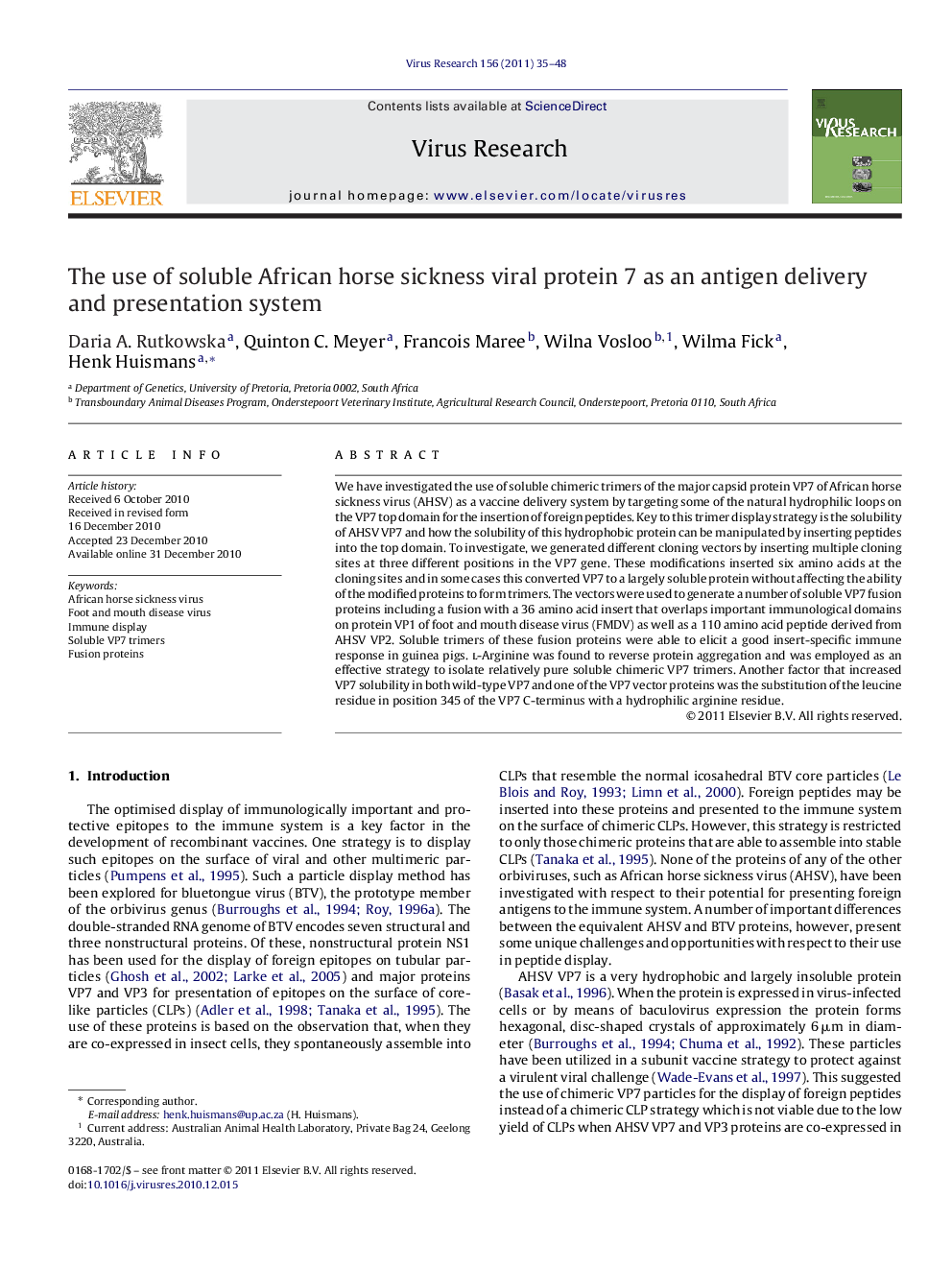| کد مقاله | کد نشریه | سال انتشار | مقاله انگلیسی | نسخه تمام متن |
|---|---|---|---|---|
| 6143519 | 1594389 | 2011 | 14 صفحه PDF | دانلود رایگان |
عنوان انگلیسی مقاله ISI
The use of soluble African horse sickness viral protein 7 as an antigen delivery and presentation system
دانلود مقاله + سفارش ترجمه
دانلود مقاله ISI انگلیسی
رایگان برای ایرانیان
کلمات کلیدی
موضوعات مرتبط
علوم زیستی و بیوفناوری
ایمنی شناسی و میکروب شناسی
ویروس شناسی
پیش نمایش صفحه اول مقاله

چکیده انگلیسی
We have investigated the use of soluble chimeric trimers of the major capsid protein VP7 of African horse sickness virus (AHSV) as a vaccine delivery system by targeting some of the natural hydrophilic loops on the VP7 top domain for the insertion of foreign peptides. Key to this trimer display strategy is the solubility of AHSV VP7 and how the solubility of this hydrophobic protein can be manipulated by inserting peptides into the top domain. To investigate, we generated different cloning vectors by inserting multiple cloning sites at three different positions in the VP7 gene. These modifications inserted six amino acids at the cloning sites and in some cases this converted VP7 to a largely soluble protein without affecting the ability of the modified proteins to form trimers. The vectors were used to generate a number of soluble VP7 fusion proteins including a fusion with a 36 amino acid insert that overlaps important immunological domains on protein VP1 of foot and mouth disease virus (FMDV) as well as a 110 amino acid peptide derived from AHSV VP2. Soluble trimers of these fusion proteins were able to elicit a good insert-specific immune response in guinea pigs. l-Arginine was found to reverse protein aggregation and was employed as an effective strategy to isolate relatively pure soluble chimeric VP7 trimers. Another factor that increased VP7 solubility in both wild-type VP7 and one of the VP7 vector proteins was the substitution of the leucine residue in position 345 of the VP7 C-terminus with a hydrophilic arginine residue.
ناشر
Database: Elsevier - ScienceDirect (ساینس دایرکت)
Journal: Virus Research - Volume 156, Issues 1â2, March 2011, Pages 35-48
Journal: Virus Research - Volume 156, Issues 1â2, March 2011, Pages 35-48
نویسندگان
Daria A. Rutkowska, Quinton C. Meyer, Francois Maree, Wilna Vosloo, Wilma Fick, Henk Huismans,